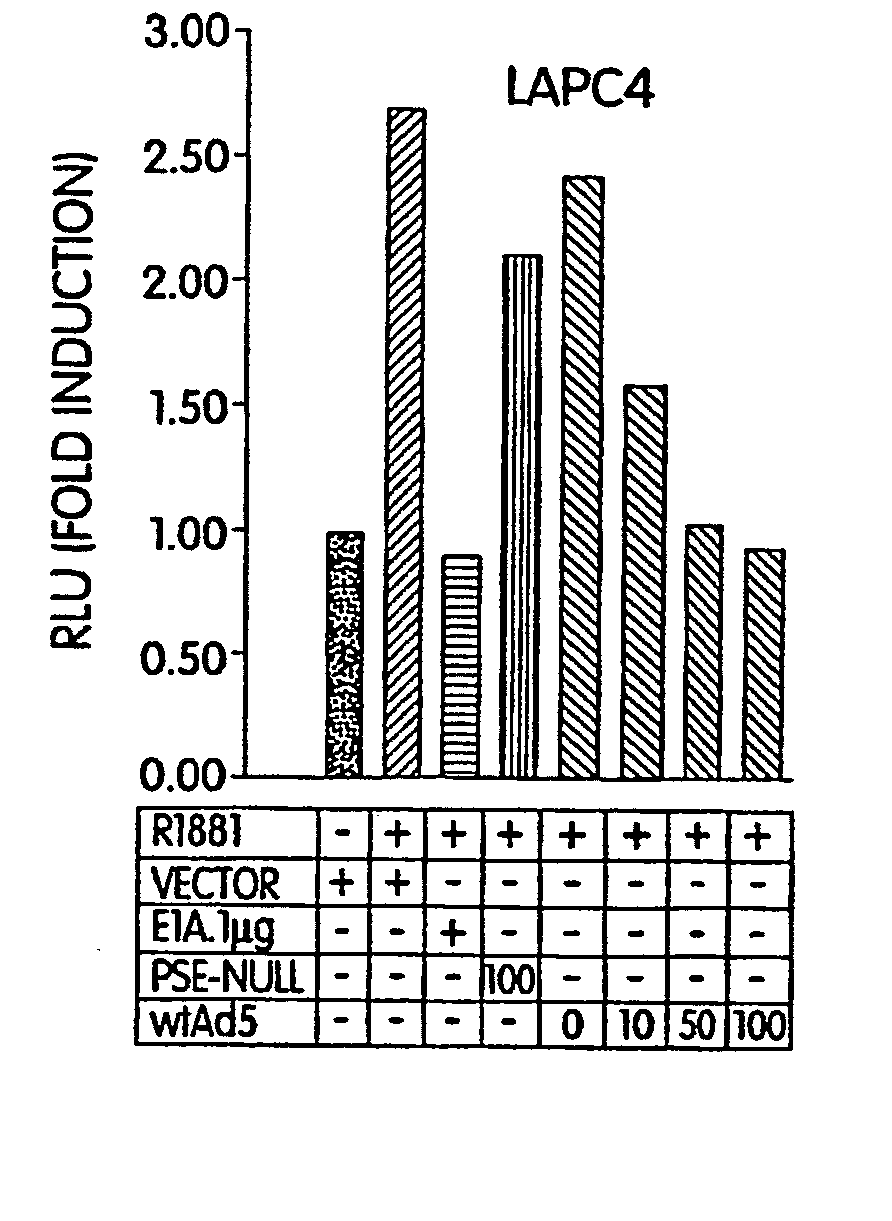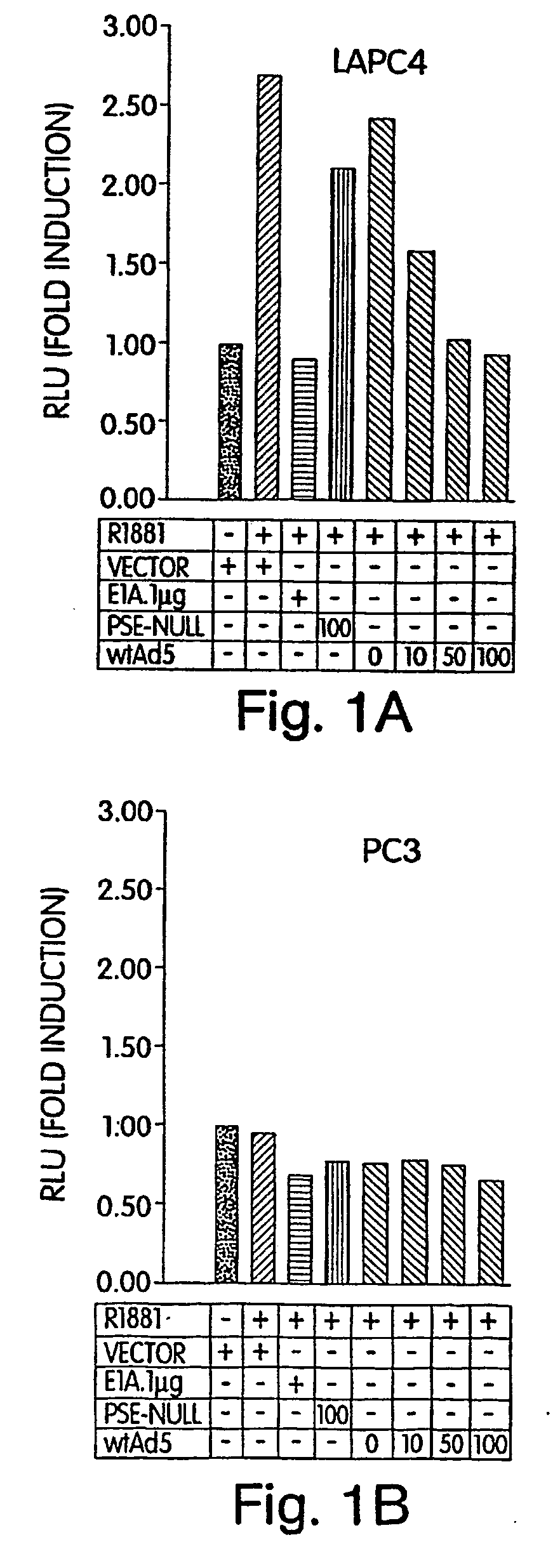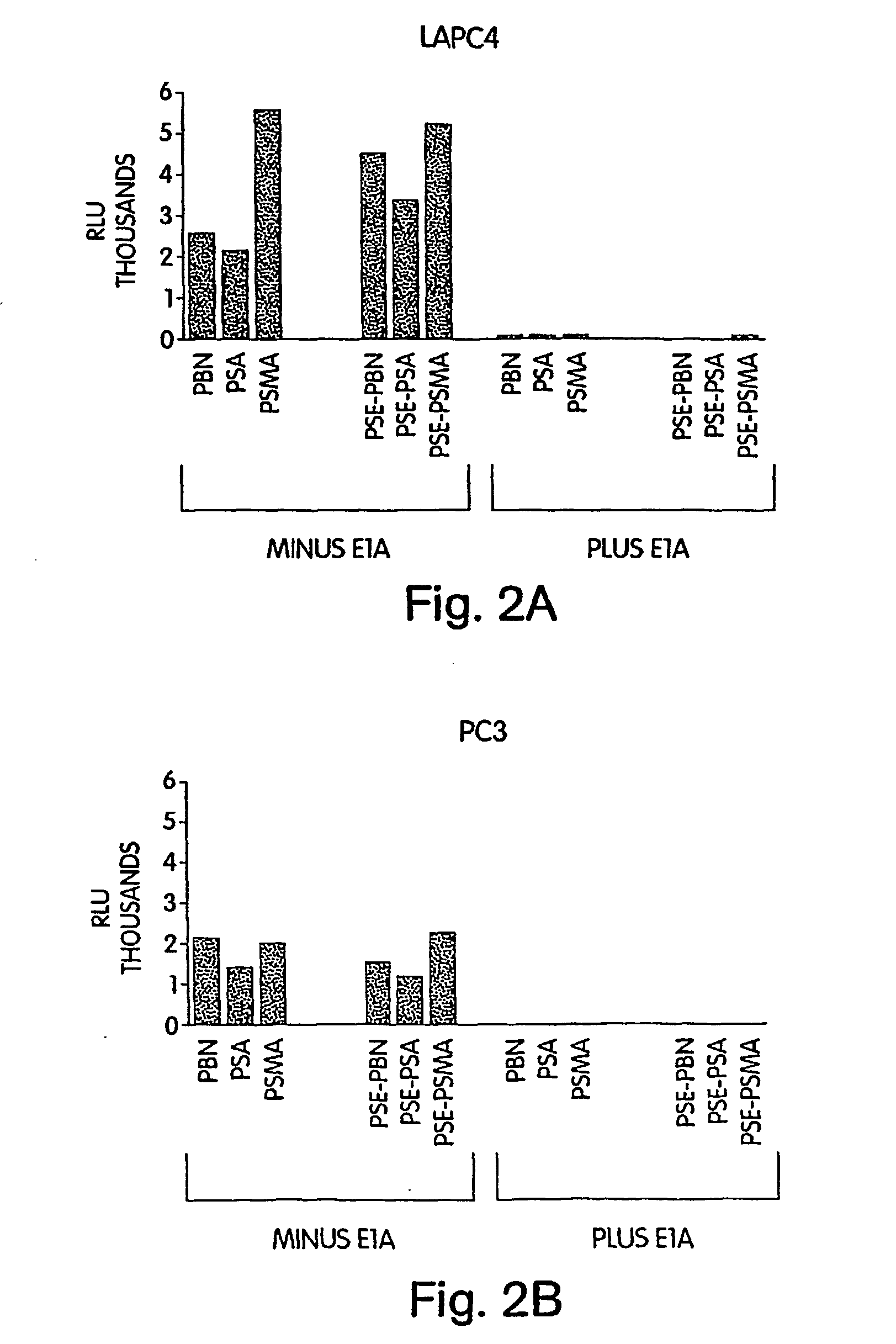Enhancement of adenoviral oncolytic activity in prostate cells by modification of the e1a gene product
a technology of adenoviral oncolytic activity and gene product, which is applied in the direction of peptide sources, dsdna viruses, fusions for specific cell targeting, etc., can solve the problems of virus replication, significant side effects, and require hospital stays and time out of work, so as to suppress prostate tumor growth and suppress prostate tumor growth.
- Summary
- Abstract
- Description
- Claims
- Application Information
AI Technical Summary
Benefits of technology
Problems solved by technology
Method used
Image
Examples
example 1
E1A Inhibits AR Activation of a Reporter Gene:
[0192] Since the androgen receptor and E1A share many common interactions with mediators of target gene expression, we hypothesized that E1A expression may adversely affect AR activity. In order to test this hypothesis, we cloned the E1A gene from the adenovirus wildtype genome (including both introns 1 & 2) into an expression plasmid (PBK-CMV from Stratagene), under the constitutive control of the CMV promoter. We then performed co-transfection experiments with an androgen inducible promoter (pBK-PSE-PBN-LUC), described above. We chose to use LAPC4 as the AR positive cell line for our analysis, since this cell line expresses wildtype AR, while the more commonly used LNCaP expresses a mutant AR; however, to date we have consistently found similar results with both cell lines when performing androgen induction. PC3 was used as the prototypical AR negative prostate cancer cell line. FIG. 1, Panel A demonstrates the results of co-transfect...
example 2
AR-E1A Fusion Chimera Markedly Enhances AR dependent Trans-gene Activation:
[0194] We tested our hypothesis that a fusion of E1A and AR domains would convert E1A into a potent co-activator by performing co-transfection of our fusion constructs with an AR dependent reporter construct pBK-PSE-PBN-LUC (FIG. 3). Each well of a 96 well plate was co-transfected with 0.1 μg of an E1A fusion construct, and a fixed amount of pBK-PSE-PBN-LUC (0.1 μg) in the presence or absence of androgen (R1881) in three different cell lines. The first two cell lines were prostate cancer; the last was non-prostate (HeLa). The AR positive line LNCaP demonstrated induction of the reporter with androgen (control), inhibition of induction with E1A, and constitutive expression with E1A-TAD. The full-length AR fusion (E1A-AR) demonstrated an excellent activation with hormone (super-induction), both in the AR positive cell line LNCaP and the AR negative cell line PC3. The E1A-DBD raised basal expression of the repo...
example 3
The Effect of Geldenamycin on Androgen Receptor function in EA1 / Ar chimera transfected PC-3 cells and COS-1 cells:
[0195] As illustrated in FIGS. 20 and 21, different chimeras were tested in two different cell lines (PC3 and COS-1 cells) in the presence of hormone (R1881) with and without. Geldenamycin. The results indicate that Geldenamycin can inactivate the effect on expression by the three chimeras, E1A / AR (full length), E1A / TAD and E1A / C685Y. RLU are expressed as % Renilla control co-transfection expression (i.e., dual luciferase).
PUM
| Property | Measurement | Unit |
|---|---|---|
| length | aaaaa | aaaaa |
| size | aaaaa | aaaaa |
| androgen-refractory | aaaaa | aaaaa |
Abstract
Description
Claims
Application Information
 Login to View More
Login to View More - R&D
- Intellectual Property
- Life Sciences
- Materials
- Tech Scout
- Unparalleled Data Quality
- Higher Quality Content
- 60% Fewer Hallucinations
Browse by: Latest US Patents, China's latest patents, Technical Efficacy Thesaurus, Application Domain, Technology Topic, Popular Technical Reports.
© 2025 PatSnap. All rights reserved.Legal|Privacy policy|Modern Slavery Act Transparency Statement|Sitemap|About US| Contact US: help@patsnap.com



